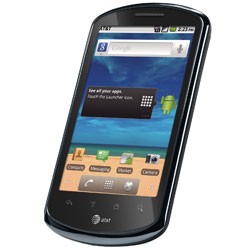
Last March, I said low-end Android handsets had already begun their market takeover, and cited a half dozen companies that had released, or were planning on releasing mass market Android smartphones in 2011 and 2012.
One of the companies I mentioned, Chinese telecommunications equipment maker Huawei, had just released the Ideos X3, which had a consumer-friendly unsubsidized price of $199, falling in line with the company's tradition of releasing cheaper mass market handsets and modems.
Wednesday, Huawei announced it will begin selling a close cousin of the Ideos X3 called the Impulse 4G through U.S. carrier AT&T starting on September 18.
Known internationally as the Ideos X5, the Impulse 4G will cost only $29.99 with a new two-year contract with AT&T.
Impulse 4G, as the name suggests, uses AT&T's current "4G" HSPA+ network. It is equipped with a 3.8" touchscreen, a 5 megapixel flash camera capable of 720P HD video capture, Wi-Fi and GPS, and runs Android 2.2 (FroYo).
The features of this device are modest, but the features aren't necessarily the main point of this device anyway. Currently, you can buy Android smartphones for as low as one cent with AT&T, but they are all phones that have been available for a year or more. The Impulse 4G is launching at a price far below the launch price of all of those devices.
And with a two-year cycle of obsolescence, phones like the Impulse 4G will be free much sooner, and as more companies release more mass market Android phones, AT&T's portfolio of free smartphones will increase rapidly.
The Pew Internet and American Life Project did a study of smartphone adoption in July, and found that only 35% of adults in the United States were using a smartphone, but there were three main groups where smartphone adoption was higher than the national average: The financially secure (those with an income of $75k or more), those under 45 years of age, and African-Americans and Latinos.
"Smartphone owners under the age of 30, non-white smartphone users, and smartphone owners with relatively low income and education levels are particularly likely to say that they mostly go online using their phones," the study says.
The cheaper a device, the lower the barrier of entry to a service contract becomes, and earning more subscribers is ultimately the goal.

